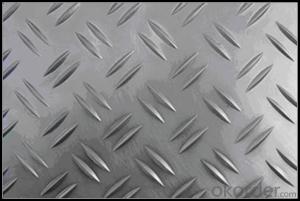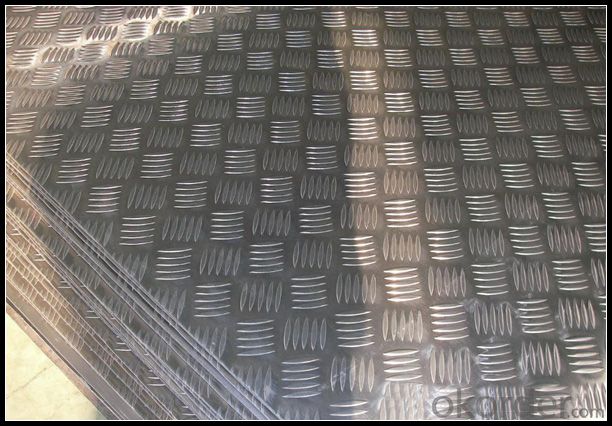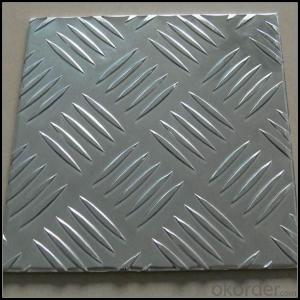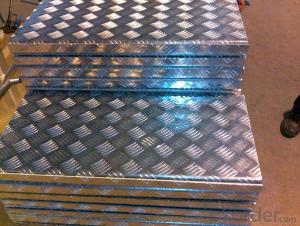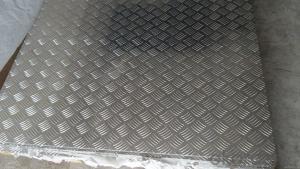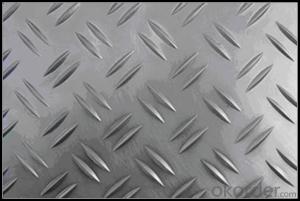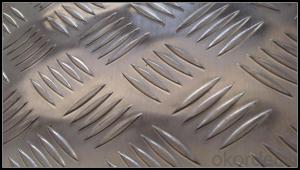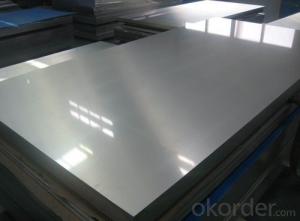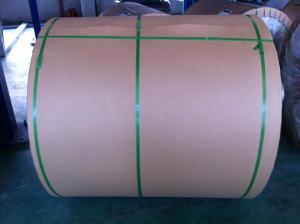Aluminum Sheets Wisconsin - Five Bar Treadplate Aluminium Panel 3003 H14 for Tool Box
- Loading Port:
- Shanghai
- Payment Terms:
- TT OR LC
- Min Order Qty:
- 5 m.t.
- Supply Capability:
- 10000 m.t./month
OKorder Service Pledge
OKorder Financial Service
You Might Also Like
Specification
1. Specification of Five Bar Treadplate Aluminium Panel 3003 H14 for Tool Box
Alloy Number | AA1XXX,AA3XXX,AA5XXX |
Temper | H12, H14, H16, H18, H22, H24, H26, H32, HO, F |
Thickness | 0.1mm – 500mm |
Width | 10mm- 2200mm |
Standard | GB/T3880-2006, ASTM, ISO, EU standard |
2. Application of Five Bar Treadplate Aluminium Panel 3003 H14 for Tool Box
Transfporation, vehicle, antiskid plate,toolbox,canopy body,
3. Feature of Five Bar Treadplate Aluminium Panel 3003 H14 for Tool Box
Surfact Quality :
Be free from Oil Stain, Dent, Inclusion, Scratches, Stain, Oxide Dicoloration, Breaks, Corrosion, Roll Marks, Dirt Streaks and other defect which will interfere with use,
Mechenical Property:
Chemical Composite and Mechanical Property
4. Certificate:
SGS and ROHS(if client request, paid by client), MTC(plant provided), Certificate of Origin(FORM A, FORM E, CO), Bureau Veritas and SGS (if client request, paid by client), CIQS certificate
5. Image of Five Bar Treadplate Aluminium Panel 3003 H14 for Tool Box

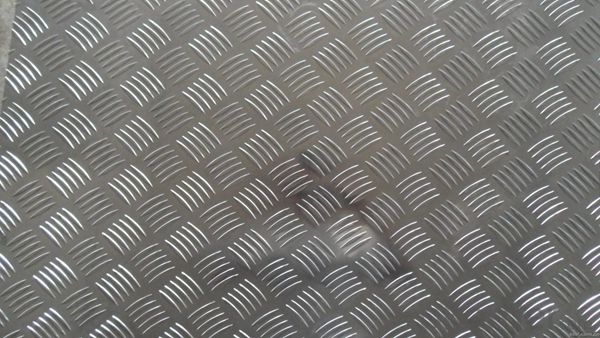
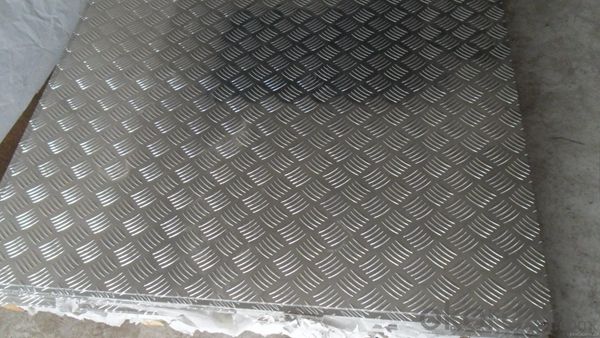
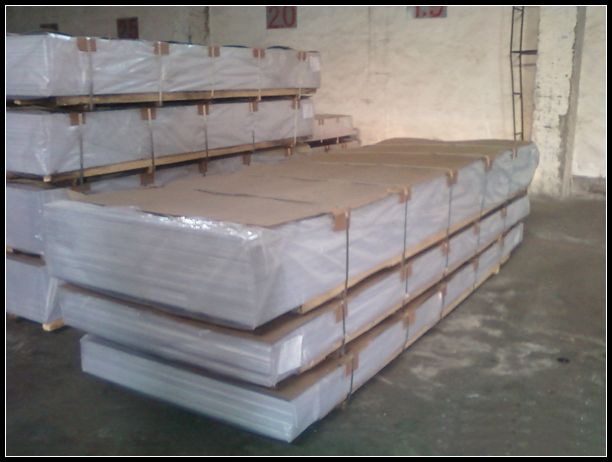
6. Package and shipping of Five Bar Treadplate Aluminium Panel 3003 H14 for Tool Box
First, plastic cloth with drying agent inside; Second, Pearl Wool ; Third, wooden cases with dry agent , fumigation wooden pallets, aluminum surface could cover blue PVC film
7. FAQ
1) What is the delivery time?
Dpends on actual order, around 20 to 35 days
2)What is the QC system:
We have QC staff of 20 persons and advanced equipment, each production is with MTC traced from Aluminum ingot lot.
3) What market do you mainly sell to?
Australia, America, Asia, Middle East, Western Europe, Africa etc
- Q: What are the safety precautions when working with aluminum sheets?
- When working with aluminum sheets, it is important to take certain safety precautions to ensure your well-being. Here are some key safety measures to follow: 1. Personal Protective Equipment (PPE): Always wear appropriate PPE, such as safety goggles, gloves, and a face mask, to protect yourself from potential hazards. Aluminum sheets may produce sharp edges, metal filings, or dust particles that can cause injury if they come into contact with your eyes, skin, or respiratory system. 2. Ventilation: Ensure that the work area is well-ventilated to minimize the buildup of aluminum dust or fumes. Proper ventilation helps in preventing the inhalation of harmful airborne particles, especially when cutting or shaping aluminum sheets. 3. Handling and storage: Handle aluminum sheets with care to avoid injuries. They can have sharp edges, so it is essential to wear gloves while handling them. Additionally, store the sheets in a secure and organized manner to prevent accidents like tripping or falling. 4. Cutting and shaping: When cutting or shaping aluminum sheets, use appropriate tools designed for this purpose. Avoid using tools that are not suited for aluminum, as they may cause damage or create unsafe conditions. Ensure that the cutting area is clear of clutter, and be mindful of your body position to avoid accidents. 5. Fire safety: Aluminum is a highly flammable material, so it is crucial to be cautious of fire hazards. Keep flammable materials away from the work area, and avoid using open flames or sparks in the vicinity. In case of a fire, have a fire extinguisher readily available and know how to use it effectively. 6. Training and knowledge: It is important to have proper training and knowledge about working with aluminum sheets. Understanding the properties of aluminum, the appropriate techniques, and safety precautions can help prevent accidents and injuries. 7. Regular maintenance: Keep your tools and equipment in good working condition. Regularly inspect them for any damage or wear and tear, and replace or repair as necessary. Faulty or poorly maintained tools can increase the risk of accidents when working with aluminum sheets. By following these safety precautions, you can minimize the potential risks and ensure a safe working environment when handling aluminum sheets.
- Q: What is made when Aluminium and Hydrochloric Acid reacts? It makes a dense white smoke with a metallic odour in the gas. Could it be dissolved amounts of Aluminium Chloride or small amounts of unreacted Aluminium in the gas? Or could be that the Chlorine (in equilibrium with HCl and HClO) made chlorates and perchlorates of aluminium that give off odours?Don't tell me the gas isn't supposed to have an odour. I know what diatomic Hydrogen smells like. Nothing. That's the way it should be. But unfortunately, that's not the way it is.
- When aluminum reacts with hydrochloric acid heat is produced as well as aluminum chloride. This heat is warming up the HCl, which you should remember is a gas dissolved in water, a little of which evolves from the water. You're smelling HCl gas. There shouldn't be any dense white smoke, unless you've got an open container of ammonia nearby. In that case the smoke is particulate ammonium chloride, produced by the reaction in the air of HCl and NH3.
- Q: A copper-aluminum alloy has an aluminum concentration of (5.19x10^2) kg/m3.If the densities of aluminum and copper are 2.71 and 8.94 g/cm3, respectively, what is the concentration of aluminum in wt%?Could someone please help wit this question, im lost
- Copper Aluminum Alloy
- Q: Are aluminum sheets suitable for chemical storage containers?
- Aluminum sheets are generally not suitable for chemical storage containers. While aluminum is known for its corrosion resistance, it can still react with certain chemicals, leading to degradation of the container and potential contamination of the stored substance. Additionally, aluminum is a relatively soft metal and may not provide adequate strength and durability for long-term storage of hazardous chemicals. It is advisable to use materials specifically designed for chemical storage, such as high-density polyethylene (HDPE), polypropylene (PP), or stainless steel, which offer superior chemical resistance and structural integrity.
- Q: avaliable in the uk preferably in a high street store and preferably anti-perperant aswell
- Are you allergic to aluminum or are you refusing to use it because it is not natural? Aluminum has solid research to back its antiperspirant ability. As long as the deodorant or antiperspirant is well-formulated, it is good. There is no best. You should make a search on Amazon UK with key word like natural or organic deodorant or antiperspirant because those terms usually filter out aluminum ones. But, whether or not it will be effective is a different story.
- Q: how to distinguish the physical property of copper sheet from the one of aluminum sheet?
- physical property: copper sheet: golden, heavy, aluminum sheet: white, light.
- Q: What is the maximum temperature that the aluminum sheets can withstand?
- The maximum temperature that aluminum sheets can typically withstand is around 600 degrees Fahrenheit (315 degrees Celsius).
- Q: Are aluminum sheets suitable for insulation purposes?
- Yes, aluminum sheets are suitable for insulation purposes. Aluminum is a highly reflective material that can effectively block the transfer of heat, making it an excellent choice for insulation. It has a low emissivity value, meaning that it reflects heat radiation rather than absorbing it. This property helps to maintain a consistent temperature within a space, reducing the need for heating or cooling. Additionally, aluminum sheets are lightweight, easy to install, and resistant to moisture, making them a practical option for insulation in various applications such as attics, walls, floors, and HVAC systems.
- Q: Are aluminum sheets suitable for chemical storage tanks?
- Yes, aluminum sheets can be suitable for chemical storage tanks depending on the specific requirements of the chemical being stored. Aluminum is known for its excellent corrosion resistance, which makes it suitable for storing many chemicals. It forms a protective oxide layer that prevents further corrosion, even when exposed to harsh environments. However, it is important to consider the compatibility of the chemical with aluminum. Some chemicals, such as strong acids or bases, may react with aluminum and cause corrosion or other undesirable reactions. In such cases, alternative materials like stainless steel or fiberglass-reinforced plastic (FRP) may be more suitable. Additionally, the thickness and grade of the aluminum sheets should be chosen carefully based on the specific chemical being stored and the tank's intended use. Thicker sheets may be necessary for storing highly corrosive or hazardous chemicals, while thinner sheets may be sufficient for less aggressive substances. Overall, aluminum sheets can be a suitable choice for chemical storage tanks, but it is crucial to carefully evaluate the chemical compatibility and select the appropriate thickness and grade of aluminum to ensure safe and reliable storage.
- Q: Are aluminum sheets suitable for high-temperature applications?
- Aluminum sheets are generally not suitable for high-temperature applications. While aluminum has a relatively high melting point of 660.3°C (1220.5°F), its strength and mechanical properties significantly decrease as the temperature rises. At elevated temperatures, aluminum tends to soften, deform, and lose its structural integrity. Additionally, aluminum has a relatively low thermal conductivity, which means it does not efficiently conduct heat away from the source, leading to potential overheating issues. Therefore, for high-temperature applications, materials such as stainless steel or refractory metals like titanium or tungsten are more commonly used due to their superior high-temperature performance and thermal conductivity.
Send your message to us
Aluminum Sheets Wisconsin - Five Bar Treadplate Aluminium Panel 3003 H14 for Tool Box
- Loading Port:
- Shanghai
- Payment Terms:
- TT OR LC
- Min Order Qty:
- 5 m.t.
- Supply Capability:
- 10000 m.t./month
OKorder Service Pledge
OKorder Financial Service
Similar products
Hot products
Hot Searches
Related keywords
